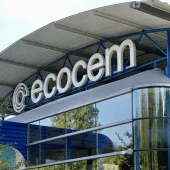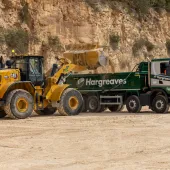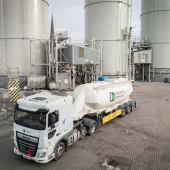LafargeHolcim launch carbon capture project in Canada

Company commits to developing world’s first full-cycle solution to capture and reuse CO2
LafargeHolcim have announced a partnership project (with Lafarge Canada, Inventrys and Total) to develop and demonstrate the first full-cycle solution to capture and reuse CO2 from a cement plant while also reducing greenhouse gas emissions.
Project CO2MENT will demonstrate and evaluate Inventys’ CO2 Capture System and a selection of CO2 utilization technologies at Lafarge’s Richmond, BC, cement plant over the next four years. The project has three phases and is expected to be fully operational by the end of 2020.
During the first phase the partners will work on purifying the cement flue gas in preparation for CO2 capture. The second phase will focus on the separation of CO2 from flue gas using a customized cement version of Inventys’ carbon capture technology at pilot scale.
As part of the third and final phase, the captured CO2 will be prepared for reuse to support the economical assessment and demonstration of CO2 conversion technologies onsite, such as CO2 injected concrete and fly ash.
Project CO2MENT will also see LafargeHolcim further investing into measures to reduce clinker-to-cement ratio and to consume less energy-per-tonne of cement by using lower-carbon fuels while improving the efficiency of their processes.
The company has recently launched a new and improved lower carbon fuel (LCF) system to reduce greenhouse gas emissions associated with cement production at its Richmond site. It is expected to replace up to 50% of fossil fuel use with lower carbon fuels and could result in a 20% reduction of combustion emissions.
The LCF system will also allow Lafarge Canada to divert approximately 100,000 tonnes per year of waste from local landfills – the equivalent of around 8,300 loaded garbage trucks.
René Thibault, region head North America for LafargeHolcim, said: ‘We are committed to reducing CO2 emissions and we are excited to join forces with Inventys and Total through Project CO2MENT. We hope to discover ways to capture emissions from our production processes and reuse them in our products, advancing a circular economy even further than today.’








